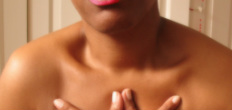- Home
- About Us
- TSPT Academy
- Online Courses
-
Resources
- Newsletter
- Business Minded Sports Physio Podcast
- Day in the Life of a Sports PT
- Residency Corner
-
Special Tests
>
-
Cervical Spine
>
- Alar Ligament Test
- Bakody's Sign
- Cervical Distraction Test
- Cervical Rotation Lateral Flexion Test
- Craniocervical Flexion Test (CCFT)
- Deep Neck Flexor Endurance Test
- Posterior-Anterior Segmental Mobility
- Segmental Mobility
- Sharp-Purser Test
- Spurling's Maneuver
- Transverse Ligament Test
- ULNT - Median
- ULNT - Radial
- ULNT - Ulnar
- Vertebral Artery Test
- Thoracic Spine >
-
Lumbar Spine/Sacroiliac Joint
>
- Active Sit-Up Test
- Alternate Gillet Test
- Crossed Straight Leg Raise Test
- Extensor Endurance Test
- FABER Test
- Fortin's Sign
- Gaenslen Test
- Gillet Test
- Gower's Sign
- Lumbar Quadrant Test
- POSH Test
- Posteroanterior Mobility
- Prone Knee Bend Test
- Prone Instability Test
- Resisted Abduction Test
- Sacral Clearing Test
- Seated Forward Flexion Test
- SIJ Compression/Distraction Test
- Slump Test
- Sphinx Test
- Spine Rotators & Multifidus Test
- Squish Test
- Standing Forward Flexion Test
- Straight Leg Raise Test
- Supine to Long Sit Test
-
Shoulder
>
- Active Compression Test
- Anterior Apprehension
- Biceps Load Test II
- Drop Arm Sign
- External Rotation Lag Sign
- Hawkins-Kennedy Impingement Sign
- Horizontal Adduction Test
- Internal Rotation Lag Sign
- Jobe Test
- Ludington's Test
- Neer Test
- Painful Arc Sign
- Pronated Load Test
- Resisted Supination External Rotation Test
- Speed's Test
- Posterior Apprehension
- Sulcus Sign
- Thoracic Outlet Tests >
- Yergason's Test
- Elbow >
- Wrist/Hand >
- Hip >
- Knee >
- Foot/Ankle >
-
Cervical Spine
>
- I want Financial Freedom
- I want Professional Growth
- I want Clinical Mastery
 Throughout our early clinical rotations, a common impairment that we noticed was forward shoulder posture (look around your classroom and you will see it as well!). In our program, we were taught to measure muscle strength using Kendall's technique. In her book, Muscles: Testing and Function, in Posture and Pain, Kendall demonstrates measuring the length of the pec minor, along with several other muscles, in the supine position, from the posterolateral border of the acromion to the table top (>3-4 finger lengths being an adaptively shortened muscle). In this position, the biceps brachii, coracobrachialis, and pectoralis minor could all contribute to the protracted/anteriorly tilted shoulder, due to the common attachment to the coracoid process. We commonly found that the scapula lowered to normal position with shoulder flexion, which would indicate adaptively shortened coracobrachialis, even though the common assumption is the pec minor being the culprit. This article demonstrates that the pectoralis minor is indeed found to be adaptively shortened in many individuals and provides a much more reliable technique to measure the length of the pectoralis minor, as long as proper palpation skills are used. The key is to use a tape measure or caliper to measure the distance between the coracoid process and the sternal edge of the 4th rib. While there may not be sufficient evidence to start using this in the clinic right away, this new technique is something to consider when examining patients. Anatomy Review:
Pectoralis Minor Muscle: Origin: Anterior surface of the sternal ends of ribs 3-5 Insertion: Coracoid Process of the scapula Action: Protracts and depresses the scapula. Helps elevate the ribs (if O and I are reversed) Innervation: Medial Pectoral Nerve (C8-T1)
9 Comments
bakhtara mahmood
1/16/2013 01:40:01 am
how do i find and palpate the sternal edge or the costochondral junction of the 4th rib frm where the muscle originates,,,
Reply
"The investigator located the landmark by initially finding the inferior-medial aspect of the first rib at the sternum distal to the medial clavicle, and then counting down to the fourth rib."
Reply
Ed Buresh
5/27/2013 11:23:28 am
What role does the serratus anterior play in this mix? You mention biceps brachii, coracobrachialis, and pectoralis minor as culprits in anteriorly protracting the shoulder. Isn't that what the serratus anterior does? Are you ruling it out due to the anterior tilt?
Reply
Jim Heafner
5/29/2013 12:29:15 pm
Hey Ed,
Reply
10/27/2013 09:46:09 am
I thoroughly enjoyed this blog and created a Weebly account too.
Reply
Jim Heafner
10/28/2013 01:52:54 pm
Glad you are enjoying it! Let us know if there is any specific content or information you would like to learn more about!
Reply
Tonger
6/19/2014 02:12:53 pm
May I ask about 3-4 finger length what does it mean in cm or mm
Reply
10/12/2017 01:23:59 pm
When government reforms anything the results are greater costs and more complicated processes. These results will be horrifying to the healthcare system. There must be a better way.
Reply
YK11 is a dietary supplement that works primarily as a myostatin inhibitor. It is designed to help increase your muscle mass, produce more healthy chemicals, and create a healthy body growth that is sustainable for an extended period. There is some debate over whether or not it is a SARMSproduct.
Reply
Leave a Reply. |
Dr. Brian Schwabe's NEW Book in partner with PaleoHacks!
Learn residency-level content on our
Insider Access pages We value quality PT education & CEU's. Click the MedBridge logo below for TSPT savings!Archives
July 2019
Categories
All
|






 RSS Feed
RSS Feed